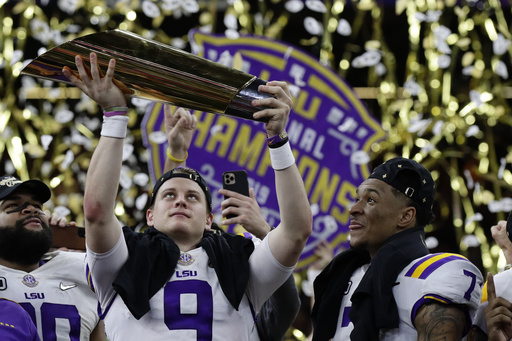NEW ORLEANS — NFL coach Sean Payton, who previously led the New Orleans Saints for 15 seasons, expressed his admiration for the Superdome during a recent visit related to Super Bowl activities. He commended the stadium, which has stood for nearly five decades, saying, “I challenge any venue to age like this one has.” The Superdome, an iconic symbol of the New Orleans skyline known for its distinct champagne-colored metallic finish and hourglass shape, is set to host the Super Bowl for the eighth time.
Payton believes the Superdome has witnessed a plethora of significant moments in the realm of sports, and he is hopeful that this weekend will add even more to its storied history. Since Hurricane Katrina inflicted damage on the roof while the stadium sheltered many residents in August 2005, nearly $1 billion has been invested in repairs and enhancements to the Superdome. According to Doug Thornton, an executive vice president with ASM Global, approximately $600 million has been dedicated to renovations since it last hosted the Super Bowl in 2013.
Notable alterations include the replacement of interior ramps with grand escalators, creating modern spaces reminiscent of upscale hotel lobbies just inside several main entrances. Thornton acknowledged that younger fans desire social engagement, stating, “Fans want to be able to walk and talk during games.” Furthermore, some upper-level seating areas have been replaced with gathering spots that provide expansive views of the field and seating areas, contributing to a more open atmosphere inside the stadium.
Natural light now streams in through newly added exterior glass windows, which are somewhat obscured from the outside by horizontal aluminum slats for aesthetic consistency with the building’s exterior. Thornton added that Louisiana’s state architectural board aims to maintain the historical significance of the structure, noting its unique architectural style that has stood the test of time.
The Superdome boasts a vast footprint of 13 acres and an interior space of 2 million square feet, allowing for versatile upgrades over the years. These adaptations include newly added sideline lounges, premium field-level suites, broadened concourses, and updated concession and restroom facilities. The video boards within the arena have also seen improvements since the last Super Bowl.
Thornton praised the original design of the Superdome, emphasizing that its generous size has enabled continuous development. He pointed out that the stadium remains on par with modern venues, despite being designed over 50 years ago. The Superdome has not only hosted seven previous Super Bowls but also six NCAA men’s Final Fours and five college football national championships since the introduction of the BCS system in 1998.
Throughout its history, the Superdome has been the backdrop for several memorable moments, including:
– Muhammad Ali’s victory over Leon Spinks on September 15, 1978.
– Roberto Duran’s iconic “No mas” moment during his bout with Sugar Ray Leonard on November 25, 1980.
– The Rolling Stones’ record-breaking indoor concert attended by 87,500 people on December 5, 1981.
– Michael Jordan’s clutch mid-range jumper during North Carolina’s national championship win on March 29, 1982.
– The dominant Chicago Bears’ triumph in Super Bowl XX against the New England Patriots on January 26, 1986.
Other notable events featured a historic address by Pope John Paul II in 1987, George H.W. Bush’s memorable acceptance speech at the Republican National Convention in 1988, and several pivotal college and NFL championship games.
The Superdome reopened post-Katrina on September 25, 2006, marking a significant moment for the city as the Saints played their first game back. Steve Gleason’s remarkable blocked punt during that game remains an enduring symbol of hope and resilience. The venue continues to be a key location for both sports and cultural events, with its history already etched into the fabric of American sports culture.



